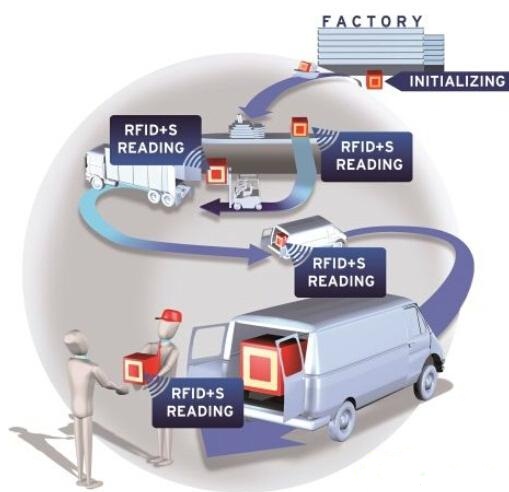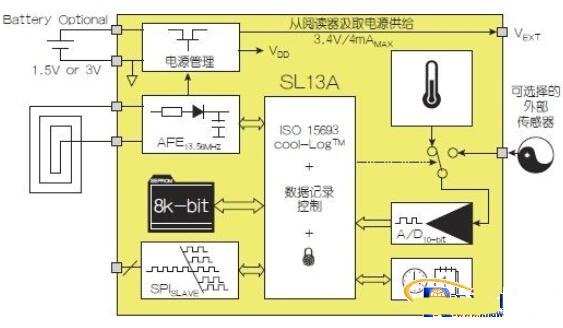There are about 366 million people with diabetes in the world, and many of them must regularly self-test blood sugar levels by pricking the skin to drain blood, and the most disgusting to them is that they must be repeated regularly.
If RF technology is developed so that patients do not need to draw blood? Near Field Communications (NFC) is a radio frequency protocol that can transmit data between devices that are within 10 cm of each other or directly touched. Nowadays, smartphones and tablets of the Android operating system are beginning to support NFC, so the application of NFC is expected to become popular in the future.
For example, medical device manufacturers have begun experimenting with micro-NFC blood glucose sensors implanted under the skin of diabetic patients, and then smart phones or tablets equipped with Android-specific applications can be read at any time near the sensor. Take the patient's blood sugar level.
The host device can not only automatically transmit the read data to the patient's attending physician, but the program can also promptly remind the patient to perform the test by setting, or the sensor will notify the medical staff when the patient does not regularly detect it.
NFC sensors are well suited for this type of application, mainly for the following reasons:
* No external power supply is required, as the sensor interface can borrow the amount of power emitted by the NFC reader RF.
* Fast and convenient because the sensor can be automatically paired with the host device in real time.
* Small size.
* Low price.
Due to the above advantages, the new NFC sensor can be widely used in many other fields besides the development of implantable blood glucose meters.
NFC sensor architecture
The NFC sensor is an RFID tag that combines a sensor interface that can be adjusted and digitized by the sensor input signal. NFC sensors not only have the same unique program identification code as the other RFID tags, but also the environmental conditions (Figure 1) or physiological data.

Figure 1: NFC sensor can be used to monitor the storage status of items and view the program identification code
Transferring the data collected by the sensor to the tag does not change the basic communication method: when an RFID reader or a smartphone with an NFC-specific application approaches the tag, the program identification code and sensor data can be read.
There are other ways to establish wireless sensing, such as attaching a sensor to an item, establishing a connection between the microcontroller and the RF transceiver, or establishing a wireless communication between the smart sensor and the reader.
NFC sensors simplify system design and enable more flexible power management methods. In fact, NFC is a very attractive technology for relatively low data rates and short-range applications:
* NFC's interaction between the two devices is intuitive and simple, with a short touch.
* NFC connections can be established in less than a second, while other systems take longer.
* NFC power demand is low, and supports very long battery life, supporting battery-free operation.
* The system cost of NFC applications is lower because it includes simpler technologies than other wireless sensors such as ZigBee and Bluetooth Low Energy.
* Since NFC operates through near-field coupling, there is no situation where data is stolen or signals are disturbed.
* The NFC system can be attached to the existing infrastructure and requires only one host device with a dedicated application to operate.
In a fully passive mode with no battery, the NFC sensor can collect power from the reader's RF and then supply power to the sensor interface and RF transmission. In battery-assisted semi-passive mode, NFC sensors operate separately in applications that require long-term autonomous monitoring. In addition, it can also provide artificially controlled power to the sensor.
An inductive tag may go through two modes during its lifetime: first perform a semi-passive mode until the battery is exhausted and then switch to passive mode. (Data is stored in non-volatile memory so it can be saved even if no power is supplied.
The basic principle of RFID system operation is that the tag collects the required amount of power from the electric field of the reader. In the NFC sensor, the collected power is generally 3.3V, 4mA, and can also be supplied to the sensor. Even when the collected power is not enough to drive the sensor, such as the antenna of the tag is small or far from the reader, the power can be stored in a small capacitor before charging to increase the amount of auxiliary power and discharge during measurement.
The NFC sensor in full passive mode allows design engineers to use their imagination to develop new applications. In theory, labels have no lifespan and no line connections, so these sensor labels can also be embedded in wall structures and sealing products. Imagine if the architect embeds the new NFC humidity sensor in the wall or floor of the house close to the water pipe or sewage pipe, we can detect the leak early, not as it is today, until the house is damaged.
Semi-passive mode
Semi-passive tags contain a power source (usually a battery) that can support the operation of the tag and sensor. Its data transmission method is the same as that of the general passive tag, using the backscattered power radiated by the reader.
Because the current drawn from the battery is so small that it is negligible, the user-controlled semi-passive inductive tag is mostly in a dormant state most of the time. Functions and measurements are typically only initiated when the sensor detects a reader RF or NFC device RF.
A stand-alone semi-passive sensing tag for long-term autonomous monitoring applications is called a data logger. The data logger can be initiated by an external event or triggered periodically by an integrated real-time clock (RTC). Such applications require a continuous current supply of 2?A from the battery to support RTC or event-triggered wake-up. This “status monitoring†NFC sensor tag can be used to embed goods that require special attention during shipping. The NFC reader checks the sensor tag at the end of the supply chain, and the sensor tag warns if the item is in transit. In addition, the sensor can record time data and therefore provide detailed event logging.
NFC sensing application
The SL13A single chip is an NFC-V (ISO15693) compliant NFC transponder (Figure 2) that provides not only the power harvesting capability required for NFC sensors, a sensor interface, power management circuitry, and an RTC. A temperature sensor is embedded.

Figure 2: Austriamicroelectronics SL13A NFC sensor block diagram
This sensor tag can operate in both fully passive and semi-passive modes. To enable a single-chip RTC to trigger autonomous data logging, battery power is required. In passive mode, the time stamp is provided by the reader or NFC-enabled smartphone, and the power required for the sensor to operate is the amount of electricity from the collector's electric field. In addition, the data recorded by the sensor is stored on a single-chip EEPROM and password protected to prevent data from being tampered with or illegally used.
The SL13A can support a variety of applications that require sensor acquisition data and wireless data transmission. Below we briefly present several possible application scenarios.
Supply chain shelf life warnings – product shipments, storage status, and environmental conditions can all be detected and recorded by the SL13A. Perishables such as foods, beverages, and pharmaceuticals can cause chemical reactions due to temperature changes, affecting their shelf life. Some inductive tags contain algorithms that dynamically calculate the inventory lifecycle and can warn when it expires.
Building Monitoring - Embedding the SL13A and suitable sensors into structures such as buildings, bridges, and viaducts to record data such as temperature, humidity, pressure, and amplitude, and then transmit the data through an NFC reader.
Healthcare - Integrate the infusion label of the dispensing machine and the drug package to record the time of the medication, allowing the medical staff to track whether the patient is taking the medication on time.
Process Control - Inductive labels can be used to control the program and quality of each step in a factory automation program, which is more efficient than the final quality assurance program of the finished product
Telemetry - The SL13A Inductive Tag can be integrated with devices with wireless connectivity, such as WLAN or GSM, to track and monitor distant objects or the surrounding environment.
At present, Austrian microelectronics and other manufacturers have launched full-featured sensor tags, which are implemented on mature communication protocols, providing precise sensor interfaces and integrating multiple electronic functions into a single chip. The app is full of possibilities. How much potential will future system designers be able to make it work? Let us wait and see.
Dog Bath Foam.
Dog Bath Foam
DongGuan Lucky Pet Products Co., Ltd. , https://www.dgpetproduct.com